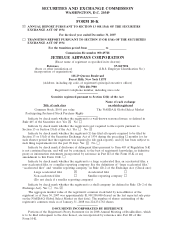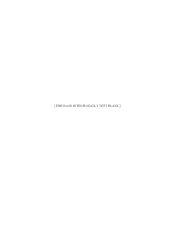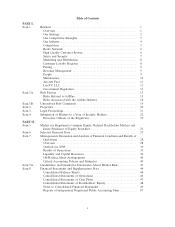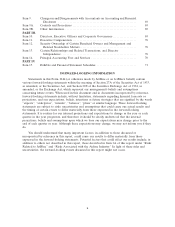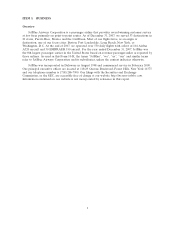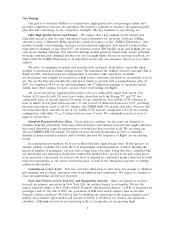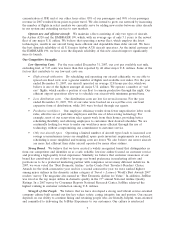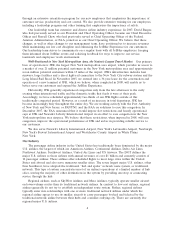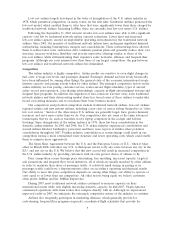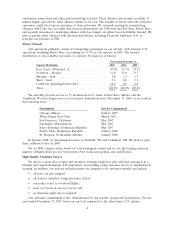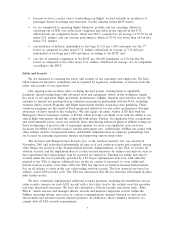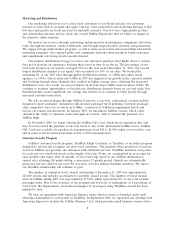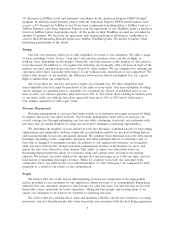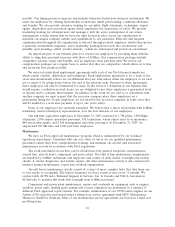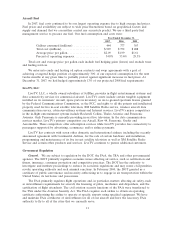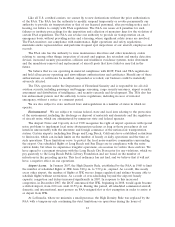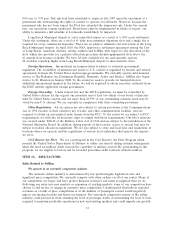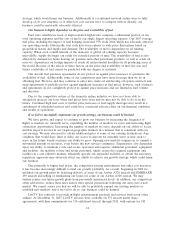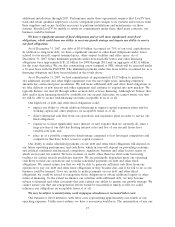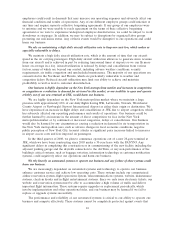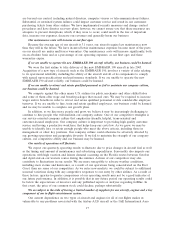JetBlue Airlines 2007 Annual Report Download - page 17
Download and view the complete annual report
Please find page 17 of the 2007 JetBlue Airlines annual report below. You can navigate through the pages in the report by either clicking on the pages listed below, or by using the keyword search tool below to find specific information within the annual report.• because we have a policy of not overbooking our flights, we had virtually no incidences of
passenger denied boardings and, therefore, led the industry in this DOT metric;
• we are committed to operating flights whenever possible and not canceling. However,
operating out of JFK, one of the most congested and delay-prone airports in the U.S.,
affected both our completion factor, which was 98.1%compared to an average of 97.9%by all
major U.S. airlines, and our on-time performance, which at 70.1%was lower than all but five
major U.S. airlines.
• our incidence of delayed, mishandled or lost bags of 5.23 per 1,000 customers was the 3rd
lowest as compared to other major U.S. airlines, which had an average of 7.12 delayed,
mishandled or lost bags per 1,000 customers, according to the DOT; and
• our rate of customer complaints to the DOT per 100,000 passengers of 0.78 was the 5th
lowest as compared to the other major U.S. airlines, which had an average of 1.41 complaints,
according to the DOT.
Safety and Security
We are dedicated to ensuring the safety and security of our customers and employees. We have
taken numerous measures, voluntarily and as required by regulatory authorities, to increase both the
safety and security of our operations.
Our ongoing focus on safety relies on hiring the best people, training them to applicable
standards, and providing them with advanced tools and equipment. Safety in the workplace targets
five areas of our operation: flight operations, maintenance, inflight, dispatch and customer service. We
continue to expand our participation in voluntary programs in partnership with the FAA, including
Aviation Safety Action Programs and Flight Operational Quality Assurance data gathering. These
voluntary programs are the result of FAA-sponsored initiatives to raise safety performance through
awareness of safety trends in the workplace. We also equip our entire Airbus A320 fleet with the
Emergency Vision Assurance system, or EVAS, which provides our flight crews with the ability to see
critical flight instruments should the cockpit fill with smoke. Further, we emphasize both occupational
and environmental safety across our network. Since introducing enhanced physical abilities testing for
those workgroups at greatest risk of ergonomic injuries, we have seen significant year-over-year
decreases in OSHA recordable injuries and the subsequent rate. Additionally, JetBlue has joined with
other airlines and the Occupational Safety and Health Administration in voluntary partnerships that
are focused on reducing ergonomics injuries and improving airport ramp safety.
The Aviation and Transportation Security Act, or the Aviation Security Act, was enacted in
November 2001 and federalized substantially all aspects of civil aviation security and required, among
other things, the creation of the Transportation Security Administration, or the TSA, to oversee all
aviation security, and the implementation of certain security measures by airlines and airports, such as
the requirement that all passenger bags be screened for explosives. Funding for airline and airport
security under the law is primarily provided by a $2.50 per enplanement ticket tax, with authority
granted to the TSA to impose additional fees on the air carriers if necessary to cover additional
federal aviation security costs. Since 2002, the TSA has imposed an Aviation Security Infrastructure
Fee on all airlines to assist in the cost of providing aviation security. The fees assessed are based on
airlines’ actual 2000 security costs. The TSA has announced that this fee structure will remain in place
until further notice.
We have voluntarily implemented additional security measures, including the installation of four
cabin security cameras on each A320 aircraft with a live video feed to the cockpit crew that provides
real time situational awareness. We have also instituted a 24-hour security operations desk, ‘‘Blue
Watch,’’ which assesses and manages threats, records and monitors suspicious activity within the
JetBlue operating system, and serves as a prime communications channel between us and our law
enforcement and aviation security business partners. In addition to these voluntary measures, we
comply with all TSA security requirements.
7


